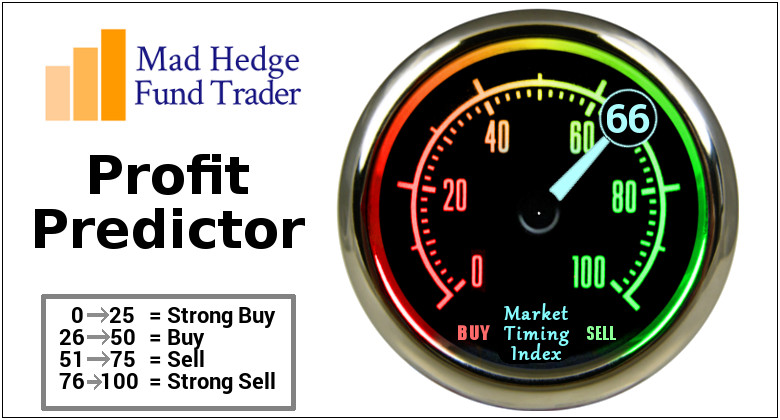In its latest earnings report for Q2 2018 Netflix definitely disappointed. Revenues came in at $3.91 billion compared to an expected $3.94 billion. New subscribers came up short 1 million of those expected.
It also provided weaker guidance, expecting to ad only 5 million new subscribers versus an earlier expected 6 million, with most coming from international.
The stock market noticed, taking the shares from $420 down to $330, a loss of 21.42%. Is it time to bail on Reed Hasting's miracle firm? Or is it time to load the boat once again?
If you have any doubts just ask any former employee of Blockbuster. In 1997, Blockbuster was the 800-pound gorilla in the VHS video rental business, with 9,000 worldwide, a 31% market share, and a $5 million market capitalization.
Today, Blockbuster has only one store left somewhere in rural Alaska. There is but one company to blame for this turn of events, and that would be Netflix.
Not only did Blockbuster bite the dust, so did the entire $8 billion-a-year movie rental industry, including Movie Gallery, Hollywood Video, and the rental operations of Walmart (WMT) and Amazon (AMZN).
That year, Reed Hastings returned his rental of the video Apollo 11 a month late and was hit with a huge $40 late charge. He was struck with a bolt of lightning. "There must be a business opportunity here," he thought.
The next day, he and friend Marc Randolph bought an oversized greeting card, tossed the card, and mailed a CD in the remaining envelope to Hastings' house. It arrived the next day in perfect condition. It was a simple matter of geometry. While the CD sat in the middle of the envelope, the Post Office only stamped the corners. This simple experiment became the basis of a business that eventually grew to $186 billion.
Yes, and now you're all thinking, "Why didn't I think of that?"
Hastings was the scion of an East Coast patrician family, a member of the social register and a regular in the New York Times society pages. His great-grandfather, Alfred Lee Loomis, was an early quant who made a fortune.
He received his undergrad degree from Bowdoin College and then joined the Peace Corps. Following a two-year stint in Swaziland to teach math, Hastings then obtained a master's degree in Computer Science from Stanford University in 1988.
Hastings founded his first firm at the age of 30, Pure Software, which went public in 1995. It then merged with Atria Software in 1996 and as Pure Atria was acquired in 1997. That left him flush with cash and looking for new challenges.
Based on the successful mail experiment Hastings invested $2 million into the Netflix idea, which Marc Randolph ran for the first two years.
Netflix then become the lucky beneficiary of a number of sea changes in technology then underway, none of which it anticipated. Sales of DVD players were taking off. The Internet and online commerce were gaining respectability, and massive overinvestment in broadband led to exponential improvements in streaming speeds.
There was also a crucial Supreme Court decision regarding the Copyright Act of 1909 that protected the right to rent a video that you owned. Hollywood had been fighting rentals tooth and nail to protect their substantial profits from DVD sales.
Hastings assembled a team of former colleagues who managed to build a website and a primitive distribution system. The Netflix website went live on April 14, 1998. The site crashed within 90 minutes, overwhelmed by demand. A rushed trip to the nearest Fry's Electronics brought 10 more PCs, which were quickly wired in as servers. By the end of the first day, Netflix had rented 500 videos.
The DVD optical format first launched in March 1997, creating the DVD player industry. Sales reached 400,000 units by the first half of 1998 and prices collapsed, from $1,100 to $580 in the first year. Netflix was swept up in the tide and monthly revenues reached $100,000 within four months.
Since newly released titles were so expensive at $15, Netflix focused on older, niche films in anime, Chinese martial arts, Bollywood movies, and, yes, soft-core porn. Netflix later exited this market when Hastings accepted an appointment to the California State Board of Education.
The company thrived. The headcount rose from an initial three to more than 100. But it was losing money - some $11 million in 1998.
Then the company caught a major break. The French luxury goods tycoon, Bernard Arnault, CEO of LVMH, was desperate to get into the Dotcom Boom and invested $30 million in Netflix. This attracted another $100 million from other venture capitalists and angel investors.
This allowed the company to experiment with its business model. It launched next-day delivery in San Francisco, which proved wildly popular, new sign-ups, renewals, and customer loyalty soared. Then in a stroke of genius Netflix initiated its Marquee Program, which allowed customers to rent four DVDs a month for only $15.95 a month, with no late fees. DVD player sales in 1999 reached 6 million, but Netflix lost $29.8 million that year.
In 2000, the Marquee Program evolved into the Unlimited Movie Rental service and the price rose to $19.95. It included a free rental, which customers could obtain by entering their credit card data, which then renewed indefinitely. This is common now but was considered wildly aggressive in 2000. Netflix was also an early artificial intelligence user, using algorithms to find movies that both members of a couple would like based on past rental data.
Netflix is a company that did 100 things wrong, any one of which could have wiped out the firm. It was the few things it did right that led it to stardom.
Hastings worked out deals with manufacturers to include a free Netflix rental coupon with every DVD player sold. The move earned it valuable market share, but almost bled the company dry since most didn't return. But a labeling error caused hard-core Chinese porn discs to get sent out instead.
A programing glitch caused members' video queues to be sent out all at once, landing some happy subscribers with 300 videos all at once. Coupon counterfeiting was rife until the company began individually coding each one.
Netflix planned to go public in 2000. Existing shareholders rushed to top up their holdings in expectation of cashing in on a first-day pop in the share price. But the Dotcom Crash intervened, and all new tech IPOs were canceled for years. This episode of greed and attempt at insider trading left Netflix well-funded through the following recession. Netflix lost $57.4 million in 2000.
In the meantime, the installed base on DVD players reached 8.6 million by 2002. Then disaster struck. Hastings learned that Amazon was entering the DVD sales market, the only source of Netflix profits. Hastings flew up to Seattle to sell Netflix to Amazon. But Jeff Bezos only offered $12 million and Hastings walked. It was a rare miss for Bezos. DVD players dropped to $200, and demand for content soared.
An important part of the Netflix story was the self-destruction of industry leader Blockbuster. Hastings offered to sell Netflix to Blockbuster at the bargain price of $50 million. By then, Netflix had 300,000 paid subscribers compared to Blockbuster's 50 million. But Blockbuster charged late fees while Netflix didn't. That difference would change the world. However, CEO John Antioco passed believing that online commerce was nothing more than a passing fad. It was a disastrous decision.
To dress up the company's financials for an IPO in 2002, Hastings fired about 40% of the company's workforce to cut costs. On May 23, 2002, Reed Hastings stood on the floor of wealth manager Merrill Lynch as the stock started trading on NASDAQ under the ticker symbol of (NFLX) at $15 a share. The company raised another $82.5 million in the deal. A year later Netflix announced it had 1 million paid subscribers, and the stock soared to $75 and the stock later split 2 for 1.
Realizing his error, Blockbuster's Antioco launched an all-out effort to catch up with Netflix in online rentals. When that news hit the market, (NFLX) shares fell back to its IPO price of $15. Late in 2004, Blockbuster launched a clunky copy of the Netflix website, but without the magical algorithms in the backend that made it work so well. Blockbuster undercut Netflix on price by $2, offering memberships for $17.95. It immediately captured 50% of all new online sign-ups but continued with its notorious late fees.
Blockbuster Online was plagued with software glitches from the start and every day presented a new crisis. Netflix also fought back with its own price cut, to $17.99. Both companies bled money. Short sellers started accumulating big positions in Netflix stock. Hastings vowed to run Blockbuster out of the online market with a $90 a quarter ad spend.
This Netflix received some manna from heaven. Corporate raider Carl Icahn secretly accumulated a chunk of Blockbuster stock in the market and then demanded that the company pursue an asset stripping strategy. Icahn eventually obtained three board seats and became de facto CEO. So, to say that management time was distracted was a gross understatement.
Netflix received another gift when Walmart finally threw in the towel for online movie rentals. Hastings jumped in and did a deal whereby (WMT) would refer all future movie rental customers to Netflix.
Blockbuster finally decided to dump its despised late fees, costing it $400 million in annual revenues. Hundreds of stores were closed to cut costs. The downward spiral began. The value of Blockbuster fell to $684 million. With 4.2 million subscribers Netflix was now worth about $1.5 billion. Blockbuster lost an eye-popping $500 million in 2005.
DVD sales and rentals reached their all-time peak of $27 billion in 2006. Slightly more than 50% of Americans then had broadband access.
Blockbuster, growing weary of the competition from Netflix, finally decided to deliver a knockout blow. It launched its Total Access program in another attempt to bleed Netflix to death by undercutting Netflix's membership price by $2. It worked, and Netflix was facing another near-death experience. Blockbuster Online's share of new subscriptions soared to 70%, and total subscribers soared from 1.5 million to 3.5 million in months. The Netflix share fell to only 17%, and the company was now losing money for the first time in years.
In a last desperate act, Netflix offered to buy Blockbuster Online for $600 billion, and would have gone up to $1 billion just to eliminate the competition. An overconfident Blockbuster, smelling blood, refused. Movie Gallery and Hollywood Video were already on the bankruptcy trail, so why shouldn't Netflix go the same way?
And then the inexplicable happened. Icahn refused to pay Antioco a promised $7 million performance bonus based on the Blockbuster Online success. Instead, he offered only $2 million and Antioco resigned, collecting an $8 million severance bonus in the process. Icahn replaced him with Jim Keyes, the former CEO of 7-Eleven.
Keyes immediately pulled the plug on the Total Access discount, thus dooming Blockbuster Online. Instead, he ordered that the company's 6,000 remaining stores sell Slurpees and pizzas to return to profitability, in effect turning them into 7-Elevens that rented videos. It was one of the worst decisions in business history. Many of the senior staff resigned and sold their stock on hearing this news. Keyes in effect seized defeat from the jaws of victory.
Reinvigorated and with subscriptions soaring once again, Netflix launched headlong in online streaming. It introduced its set top box, Roku, in 2008. It then got Microsoft to offer Netflix streaming through its Xbox 360 game console that Christmas, instantly adding potentially10 million new subscribers.
And this is what makes Netflix Netflix. Although the company had the best recommendation engine in the industry, CineMatch, Hastings thought he could do better. So, in 2006, he offered a $1 million prize to anyone who could improve Cinematch's performance by 10%. To facilitate the competition, he made public the data on 100 million searches carried out by the firm's customers.
It was the largest data set put in the public domain. Some 40,000 teams in 186 countries entered the contest, including the best artificial intelligence and machine language and mathematical minds. It became the most famous scientific challenge of its day.
After a heated three-year struggle, a team named BellKor's Pragmatic Chaos won, a combination of three teams from Bell Labs, Hungary, and Canada. The copyright for the algorithm is owned by AT&T and licensed to Netflix for a fixed annual fee. AT&T also uses the winning algorithm for its own U-verse TV programming.
When the 2008 financial crisis hit, Netflix subscribers just kept on rising at the rate of 10,000 a day as consumers stayed at home and obtained cheaper forms of entertainment. Total subscriptions topped 10 million in 2009. Those at Blockbuster cratered. A new competitor appeared on the scene, Redbox, with 20,000 supermarket kiosks offering DVDs for 99 cents a day. But Netflix was hardly affected.
By 2012, Netflix subscriptions reached 20 million. Streaming was a blowout success, with half of its customers using streaming only to watch TV shows and movies. Hollywood beat a path to Hastings' door, with Paramount Pictures, Lionsgate, and MGM earning a collective $800 million in Netflix fees. Netflix now accounted for 60% of movies streamed and 20% of total broadband usage.
When Blockbuster finally declared Chapter 11 bankruptcy on September 23, 2010, so did its Canadian operations. That opened the way for Netflix to enter the international market, picking up 1 million new subscribers practically overnight. Next it launched into Latin America, introducing Spanish and Portuguese streaming in 43 countries.
As streaming replaced DVD rental by mail, Hastings attempted to spin off the rump of the business into a firm called Quickster. Customers would now have to open two accounts, one for streaming and one for mail and pay high prices. Customers and shareholders rebelled, taking the stock from $305 down to a heartbreaking $60. This was the last chance you could buy the stock at a decent price.
Hastings recanted on Quickster and let go the 200 staff applied to the unit. Icahn made a reappearance in this story, this time accumulating a 10% share in Netflix. After demanding management changes nothing happened, and Icahn eventually sold his shares for a large profit. Finally, Icahn made money in the video business.
Going forward, Netflix's strategy is finally straightforward. Create a virtuous circle whereby superior content attracts new subscribers, who then deliver the money for better content.
CineMatch knows more about what you want to watch than you do. The immense data it is generating gives Netflix not only the insight on how to sell you the next movie, it also proves unmatched insight into trends in the industry as a whole. It also makes Netflix unassailable in the movie industry.
That has given the firm the confidence to double its original content budget from $4 billion to $8 billion this year to produce Emmy-winning series such as House of Cards and Orange is the New Black.
So, the future for Netflix looks bright. As for me, I think I'll spend the rest of the evening watching the 1931 version of Frankenstein on Netflix.

















